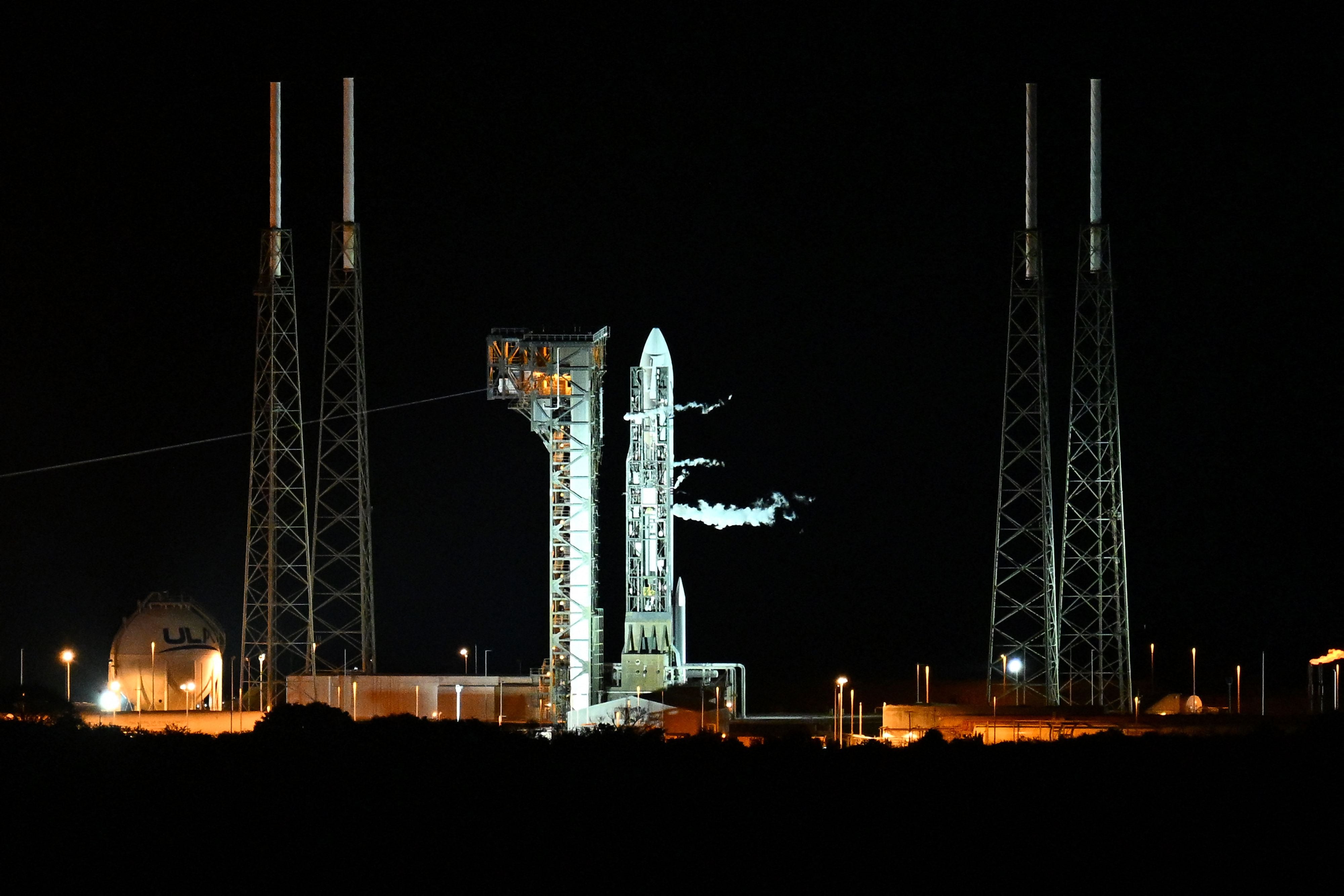The first American spacecraft to attempt to land on the Moon in more than half a century successfully took off on Monday, but this time it did so as part of a private mission.
The Vulcan Centaur rocket, from United Launch Alliance (ULA), took off on its maiden voyage from the Cape Canaveral space station, in Florida, at 02:18 local time (07:18 GMT), carrying Astrobotic’s Peregrine lunar module, whose landing is scheduled for mid-February.
READ ALSO: Did you get an alert on your cell phone? This is how Google’s system works in the event of an earthquake
If all goes according to plan, Peregrine will land in a mid-latitude region of the Moon called Sinus Viscositatis, or Bay of Stickiness, on February 23.
Mission control staff cheered and applauded when, about 48 minutes later, the lunar lander safely separated from the rocket, a key milestone for the private company.
ULA President and CEO Tony Bruno praised the launch on NASA’s live broadcast.
“I’m very excited,” he said, “it’s been years of hard work.”
“So far it has been a beautiful mission to return to the Moon,” he congratulated.
Bringing the United States back to the surface of the natural satellite for the first time since the Apollo mission “is a momentous honor,” said John Thornton, CEO of Astrobotic.
So far, only a handful of national space agencies have managed to perform a soft landing on Earth’s natural satellite: the Soviet Union was the first, in 1966, followed by the United States, which remains the only country to have landed humans on Moon.
READ ALSO: Artificial intelligence for older adults: this tool is integrated into WhatsApp
China has successfully touched the surface three times over the past decade, while India was the most recent to achieve the feat on its second attempt last year.
The United States is turning to the private sector in an effort to stimulate a broader lunar economy and send its own spacecraft at low cost, under the Commercial Lunar Payload Services (CLPS) program.
A challenging task
The space agency NASA has paid Astrobotic more than $100 million for the mission, while another contracted company, Houston-based Intuitive Machines, aims to launch its rocket in February and land near the Moon’s south pole.
“We believe it will enable more cost-effective and faster trips to the lunar surface to prepare for Artemis,” said Joel Kearns, NASA’s deputy associate administrator for exploration.
Artemis is the NASA-led program to return astronauts to lunar soil later this decade, in preparation for future missions to Mars.

Controlled landing on the Moon is a challenge as approximately half of all attempts end in failure. In the absence of an atmosphere that allows the use of parachutes, a spacecraft must navigate through treacherous terrain using only its thrusters to slow its descent.
Private missions from Israel and Japan, as well as a recent attempt by the Russian space agency, failed, although the Japanese Space Agency aims to achieve the landing of its SLIM module launched last September in mid-January.
Making matters even more complicated is the fact that this is the first liftoff of ULA’s Vulcan, although the company boasts a 100% success rate in its more than 150 previous launches.
READ ALSO: ChatGPT store coming next week so users can share their own chatbots
The company, a joint venture between Lockheed Martin and Boeing, intends for the new rocket to have reusable first-stage propellant engines and thereby try to save costs.
On board the Peregrine there is a set of scientific instruments that will be used to study the radiation and composition of the lunar surface, which would pave the way for the return of the astronauts.
It also carries a shoebox-sized vehicle built by Carnegie Mellon University, a physical bitcoin, and, somewhat controversially, cremated remains and DNA, including those of Star Trek creator Gene Roddenberry, the legendary science fiction author and scientist. Arthur C. Clarke and a dog.

The Navajo Nation, the largest indigenous tribe in the United States, maintained that the mission to the Moon desecrated a body that is sacred to its culture and has advocated for the removal of the cargo. Although they were granted a final meeting with representatives of the White House, NASA and other officials, their objections were ignored.
Source: Elcomercio
I have worked in the news industry for over 10 years. I have a vast amount of experience in writing and reporting. I have also worked as an author for a number of years, writing about technology and other topics.
I am a highly skilled and experienced journalist, with a keen eye for detail. I am also an excellent communicator, with superb writing skills. I am passionate about technology and its impact on our world. I am also very interested in current affairs and the latest news stories.
I am a hardworking and dedicated professional, who always strives to produce the best possible work. I am also a team player, who is always willing to help out others.

:quality(75)/cloudfront-us-east-1.images.arcpublishing.com/elcomercio/W7CZ77NXMNDVVKC3M5FRQMNTQA.jpg)





